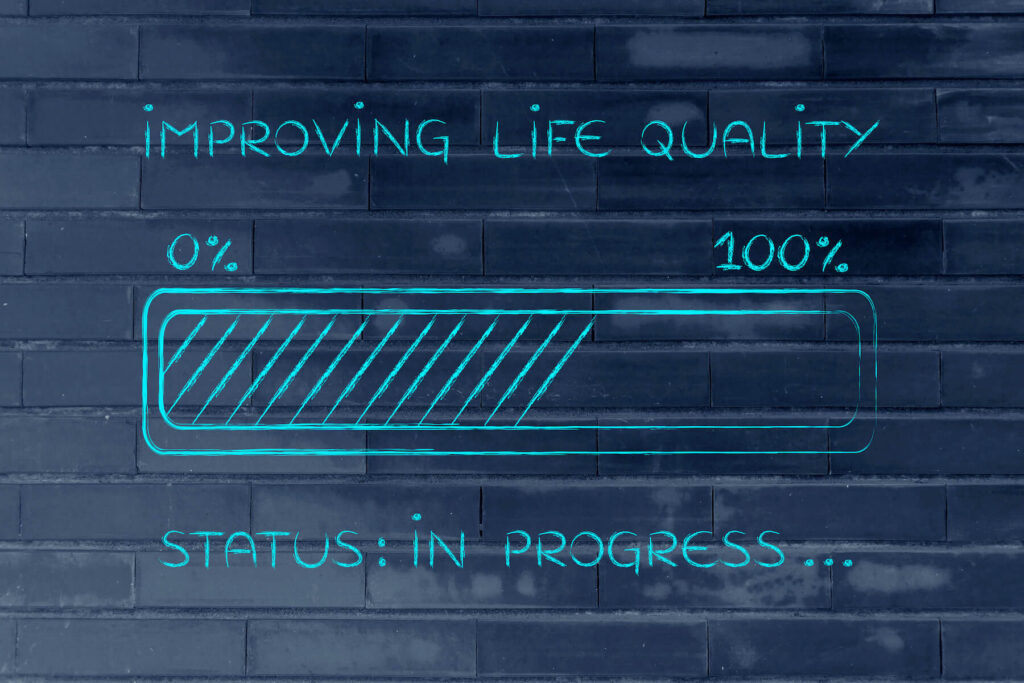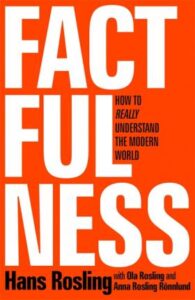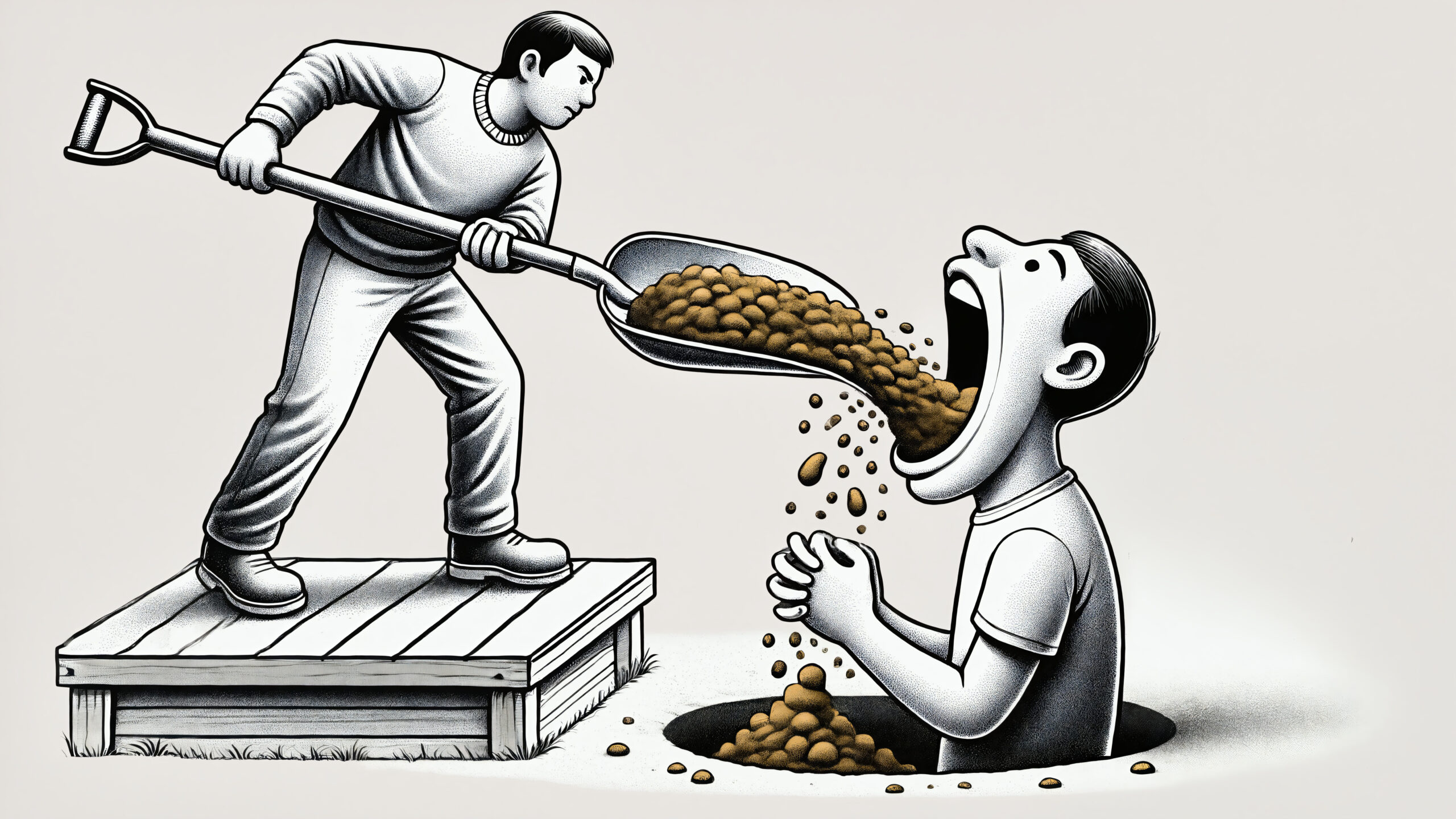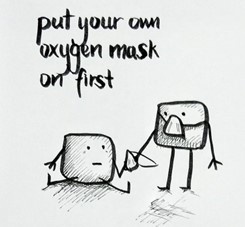Article Summary:
Advice is common, and we tend to assume it’s helpful, but there are many hazards of advice that we fail to account for. 18 risks and flaws that come with advice.
++++++
Advice. It’s all around you. You may be drowning in it.
“You should do XYZ.”
“You need to get started on ABC, pronto.”
It comes from everywhere. From family, friends, colleagues, managers.
In most cases, their intent is good. They’re trying to help.
But many people don’t pay nearly enough attention to the negative unintended consequences of doling out advice. Sometimes advice does more harm than good.
Do you give unsolicited advice?
Are you, like so many of us, great at dishing out advice but terrible at taking it in?*
Have you ever shared a frustration with someone, really just wanting to vent about it, only to be on the receiving end of a tirade of advice from them?
The Problem with Advice: 18 Risks and Flaws
Most people think of advice as helpful, and in some cases it is. But in many cases it misses the mark or even causes unexpected problems.
Yet, the advice train keeps rolling, in part because people haven’t taken the time to consider its downsides.
Here are 18 risks and flaws that come with advice:
1. While giving advice can feel great to the giver, receiving it can feel awful. Have you ever felt smothered by advice? Does it sometimes feel intrusive? It can put you on the defensive and make you feel put down or judged.
2. Giving advice can signal to the other person that you lack faith in their abilities. It can send the subtle message—even if unintended—that they need you or can’t get by on their own.
“It’s so counterproductive to think you can solve anyone else’s issues, because what it says is that they are not capable. It’s about the worst thing you can do for another human being.”
–Karin Weber, author and life coach
3. Giving advice can undermine the other person’s confidence. Over time, that can impair their ability to address their own issues going forward.
4. Giving advice can create a cycle of dependency. It may feel good to have all the answers and be needed when people seek your advice. But you may be creating dependency on your expertise. They may start coming to you more and more. Meanwhile, you’re inadvertently preventing them from learning how to address things on their own.
5. Giving advice can be more about our own need to be helpful or to be seen as an expert or hero than about the other person’s needs. For many, giving advice can feel gratifying. It can make you feel smarter. Important and accomplished. Ask this: How much of it is really about you and your ego or control?
6. Advice often comes at the wrong time. In many cases, people go out looking for advice at precisely the times they’re least able to receive it—the times when they’re down, confused, or frustrated. Similarly, when you see someone struggling, you may jump in with advice without even considering their receptivity to it.
“To rush in with success formulas when someone is emotionally low or fatigued or under a lot of pressure
is comparable to trying to teach a drowning man to swim.”
-Stephen R. Covey, Primary Greatness
7. The actual value of advice is rarely put to the test. Giving advice is easy not only because it’s quick and cost-free but also because you don’t have to stick around and implement it—and suffer the consequences if things don’t go as planned. Most people have no clue about the success or failure rate of their advice. (How could they?) And they probably overestimate their success rate by wide margins. (More on that in a coming article.) Many times, you never find out what happened after you gave your advice. What’s more, you don’t know if things worked out because of or in spite of your advice (versus other possible factors). In truth, there are many variables at play, so it’s overly simplistic to think it’s the advice that made all the difference.
8. Your advice may work for you but that doesn’t mean it will work for them. When you’re giving advice, you’re doing so from your current perspective, from your levels of consciousness and awareness. You’re doing so from a certain level of understanding and experience. You come with your own history, outlook, strengths, weaknesses, personality, passions, and predispositions. Maybe your advice would work brilliantly for you, but it’s unrealistic for them, with their personality, skills, and background.
9. Context is essential, and often it’s incomplete or flawed. Sometimes, the person seeking or getting advice hasn’t done a good job of explaining the context and the core problem, setting the stage for incomplete or faulty advice. Or you jump in without a deep dive on the situation and all the players and factors.
“There are reasons why your ideas are often not that great. To start with, you don’t have the full picture. You’ve got a few facts, a delightful collection of baggage, a robust serving of opinion, and an ocean of assumption. You think you understand what’s happening. Your brain is designed to find patterns and make connections that reassure you that you know what’s going on. Trust me, you don’t. What you’ve got is one part truth and about six parts conjecture.”
-Michael Bungay Stanier, The Advice Trap
10. People asking you for advice may not have a good sense of what you really know well and what you don’t. They may have unrealistic expectations about the things you can speak about with authority. Many young entrepreneurs, for example, are hungry for advice as they build their new venture. Makes sense. When they approach a seasoned entrepreneur, they can have questions about a hundred things. Hiring. Onboarding. Tech platforms. Stock options. Cap tables. Seed rounds. Product launches. Sales. Pricing. Strategy. Business models. Customer development. Leadership. Culture-building. A.I. Can most entrepreneurs, even if successful, address all these issues with authority and conviction, tailored to all the markets and industries of the advice-seeking young founders?
11. Nobody wants to tell someone their baby is ugly. If someone comes to you seeking advice about their new idea (e.g., for a startup or a new approach), they’re unknowingly making it exceedingly awkward for you to give forthright input. Why? Because we humans are wired to avoid conflict and have difficult conversations. You might be tempted to place negative feedback in a “sandwich” of positives (as is commonly recommended), but that risks having the recipient miss the “meat” of what they really need to hear.
12. Most advice is woefully incomplete. Think about common advice you’ve heard a hundred times: Follow your passion. Find your purpose. Don’t put all your eggs in one basket. Go the extra mile. Drink a lot of water. Network. Meditate. Be grateful. Don’t go to bed angry. Etc. Etc. True, in many cases. Even helpful. But wretchedly oversimplified and missing essential elements. For example, how do you discover your passion? Do you have just one? What is purpose, and how do you find it? What to do after diversifying? And so on.
13. Advice can easily become overwhelming. All the aspects and steps may be clear to you, because you’ve been in a similar situation before. But it may all be new, daunting, and even confounding to them.
14. Giving advice can put distance in relationships. People may stop sharing concerns or problems with you because they know you’ll be too quick to jump in with your thoughts on what they need to do.
15. Advice can lead to resentment, which can poison relationships. Have you ever given advice and then felt frustrated that the person didn’t do what you said? In your mind, it may be perfectly clear and settled that they’ll go out and dutifully do exactly what you said. But maybe they had reservations about your advice based on their own experiences? Maybe they weren’t comfortable handling things your way, given their personality or values? Perhaps they got vastly different advice from someone else they trust? Maybe they didn’t know how to follow through on what you said or lost their motivation? Or something changed in the interim? When people don’t follow your advice, do you take it personally and get agitated? That can damage the relationship, and it’s often a sign that it’s become more about you than them.
16. Recall that “I was only trying to help” is often a cop-out (even when your intentions are in fact pure). True help often requires a smarter and more nuanced approach than dishing out advice. It may be easy to hide behind the “only trying to help” rationalization, but that doesn’t wash away your sins or address all the risks and flaws of giving advice.
“’I was only trying to help’ sounds like a positive statement born of caring,
but how often does it mask unwelcome intrusion?”
-Deepak Chopra, The Shadow Effect
17. Advice can shut them down. Sometimes, while the advice giver gets on a roll with ideas and solutions, it can cause the person receiving advice to become passive. The exchange becomes one-sided. Worse, it can silence their inner voice and take them away from their deeper wisdom by engaging their self-consciousness and ego, with status games suddenly afoot. According to Professor Richard Boyatzis of Weatherhead School of Management at Case Western Reserve University, when people hear critical feedback, they tend to experience strong negative emotion, inhibiting their access to certain neural circuits in their brain and invoking “cognitive, emotional, and perceptual impairment.”
18. Advice is often a poor substitute for what’s really needed. Do they need to be told what to do? Fixed? Or do they need to be seen and heard, to be witnessed? Often, what people really need is connection, solidarity, and support—and to tap into their own brilliance and power.
Conclusion
Of course, advice isn’t all bad. Sometimes it really helps. In many cases, you might be missing something important that another person can bring to the table with advice.
Yes, it’s folly to try to go it alone. And yes, we sometimes need help and input from others. But often, the last thing people need is the kind of advice we’re all awash in.
When it comes to advice, we can and must do better.
(This article is first in a three-part series on advice. Check out the other articles: “Don’t Give Advice. Do This Instead” and “How Advice Gets Ruined by Cognitive Biases.”)
Reflection Questions
- Are you giving this kind of unsolicited or one-sided advice too often?
- Have you stopped to notice that it may not be as helpful as you think and that it may come with more risks and flaws than you’re accounting for?
- What other kinds of exchanges might be more helpful?
Tools for You
Related Articles
Postscript: Quotations on Advice
- “A good example has twice the value of good advice.” -Albert Schweitzer, physician, philosopher, and humanitarian
- “…some people walk around giving unsolicited advice. The assumption is that they’re right, others are wrong, others need correcting, and the act of doling out advice is like a gift from above. More often, though, it trounces on people’s feelings and makes things worse. People don’t want to be fixed. They want to feel supported and valued as they go through their own journey, including wins, losses, and learnings. We all want to be the heroes of our own story.” -Gregg Vanourek, “How to Give Feedback—A Communication Superpower”
- “…all advice can only be a product of the man who gives it. What is truth to one may be disaster to another. I do not see life through your eyes, nor you through mine.” -Hunter S. Thompson (Thompson was 22 years old when he wrote this letter to his friend Hume Logan in response to a request for life advice)
- “One of the hardest things we must do sometimes is to be present to another person’s pain without trying to ‘fix’ it, to simply stand respectfully at the edge of that person’s mystery and misery. Standing there, we feel useless and powerless…. In an effort to avoid those feelings, I give advice, which sets me, not you, free.” -Parker Palmer, Let Your Life Speak
- “Anyone who tries to force-feed you advice isn’t likely to be a competent soul guide.” -Martha Beck, The Way of Integrity: Finding the Path to True Self
- “The human soul doesn’t want to be advised or fixed or saved. It simply wants to be witnessed—to be seen, heard, and companioned exactly as it is. When we make that kind of deep bow to the soul of a suffering person, our respect reinforces the soul’s healing resources, the only resources that can help the sufferer make it through.” -Parker Palmer, “The Gift of Presence, the Perils of Advice”
* Admittedly, part of the problem is that some people are promiscuous about soliciting advice. Sometimes, they have an ulterior motive. What they really want is for you to do something for them (go to bat for them at work or introduce them to an important person), and they’re using your vanity as a way in (e.g., making you feel smart and important by nodding breathlessly as you dispense your brilliant advice).
+++++++++++++++++
Gregg Vanourek is a writer, teacher, and TEDx speaker on personal development and leadership. He is co-author of three books, including LIFE Entrepreneurs: Ordinary People Creating Extraordinary Lives (a manifesto for living with purpose and passion) and Triple Crown Leadership: Building Excellent, Ethical, and Enduring Organizations (a winner of the International Book Awards). Check out his Best Articles or get his monthly newsletter. If you found value in this article, please forward it to a friend. Every little bit helps!






















